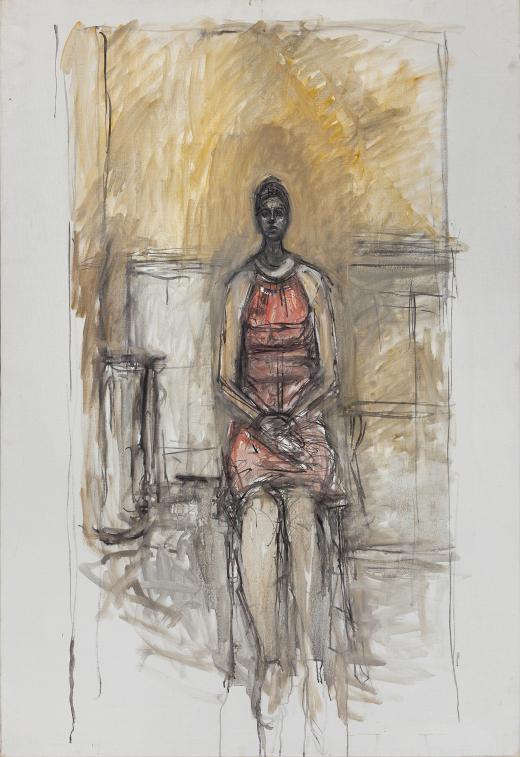PAINTINGS
GALLERY 203
Giacometti’s painting consists predominantly of portraits centered on the people closest to him, such as his brother Diego, his wife Annette, his last lover Caroline, and some of his intellectual friends. When posing for him, his models were subjected to long sessions in which he made them remain absolutely motionless in his fruitless search for the greatest possible likeness.
From 1957, he painted his portraits by accumulating layers of color and brushstrokes, resulting in works suggestive of sculpture. Nevertheless, the artist still thought his representation of reality was a failure: “My paintings are unsuccessful copies of reality. And in my work, I realize that the distance between what I do and the head I want to represent is always the same.” This frustration led Giacometti to concentrate on his work with obsessive intensity, sometimes destroying or remaking his pieces. His friend, poet Jacques Dupin, describes the process in the following way: “[the face] is certainly mine, but also that of another person who emerges from the depths in the distance and moves away as soon as we try to catch them. In the end, the tireless analysis of the model strips it of everything recognizable about it to reveal the unknown, that unknown which is released by the depths.”
Generally speaking, Giacometti’s portraits have an eerie stillness, with backgrounds in earth colors and grays, an unfinished appearance, and verticals and horizontals that traverse and frame the works, an allusion to the sculptural lines of the cages and so to confinement. “I had the feeling,” Giacometti said, “that all events existed simultaneously around me. Time was becoming horizontal and circular, it was space at the same time, and I tried to draw it.”

